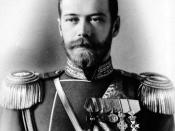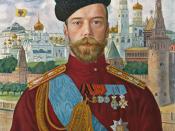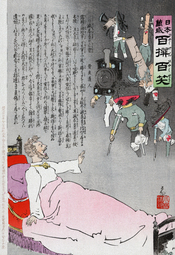The Tsar abdicated following the revolution of 1917 but he did not abdicate after the 1905 revolution there were a number of key factors which made this happen. The two revolutions did have similarities like the fact that in both revolutions the people 'hit the streets' (went on strike), but the revolutions both had differences, these were the factors that determined the survival and the fall of the Tsar.
In February 1904 war broke out between Russia and Japan in which became known as the Russo-Japanese war. The war was over a town called Manchuria situated in Northern China.
On the 22nd January 1905 peaceful demonstration began, co-ordinated by the Union of Liberation, these demonstrations were an attempt to make the Tsar transform the Russian government from an autocracy into a constitutional monarchy. Many people had demonstrated before this but never on this scale, particularly after the Russo-Japanese war of 1904-05.
The demonstrators marched towards the Winter Palace in St Petersburg peacefully and unarmed. Regardless of this they were massacred before the palace, this event becoming known as 'Bloody Sunday'. Following this the city soon started going on general strikes, the Tsar tried to reason with the workers in February by saying he would establish an elected assembly to help the government in their decisions this did not please the people and they continued to revolt. The strikes continued until Nicholas was forced to act.
On the 30th of October he issued the 'October Manifesto', this promised the following :- 1) Guaranteed freedom of speech
2) Freedom from arrest without due cause
3) An elected Duma (parliament) with power to make laws
4) Legal political parties were allowed
Nicholas even told the people that the Duma would have very little power and it turned out they did not...


